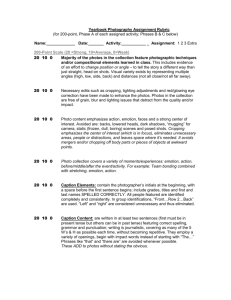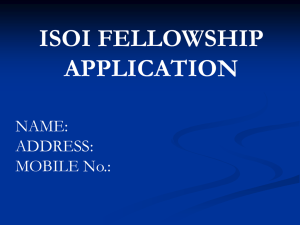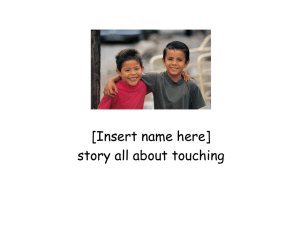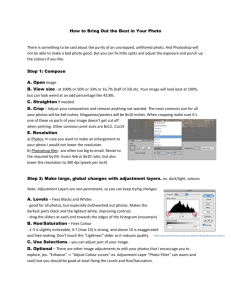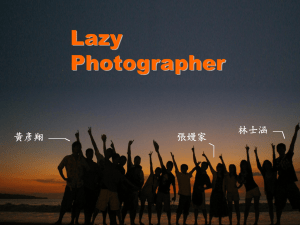Bumble Bee Vouchering and Identification Guidelines
advertisement
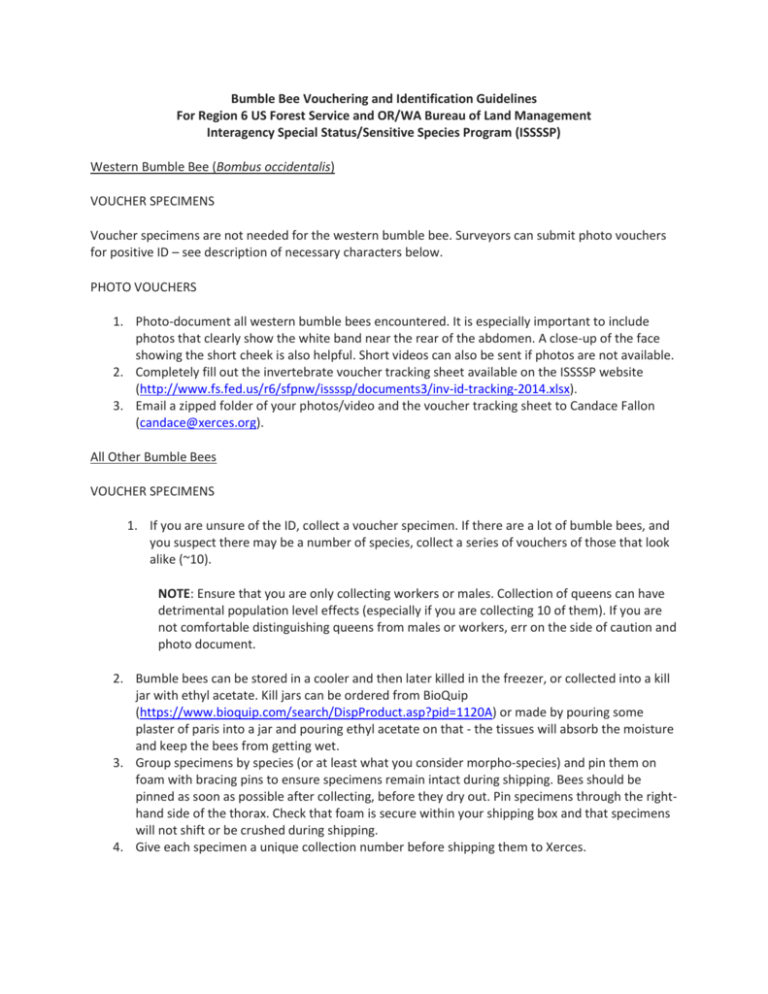
Bumble Bee Vouchering and Identification Guidelines For Region 6 US Forest Service and OR/WA Bureau of Land Management Interagency Special Status/Sensitive Species Program (ISSSSP) Western Bumble Bee (Bombus occidentalis) VOUCHER SPECIMENS Voucher specimens are not needed for the western bumble bee. Surveyors can submit photo vouchers for positive ID – see description of necessary characters below. PHOTO VOUCHERS 1. Photo-document all western bumble bees encountered. It is especially important to include photos that clearly show the white band near the rear of the abdomen. A close-up of the face showing the short cheek is also helpful. Short videos can also be sent if photos are not available. 2. Completely fill out the invertebrate voucher tracking sheet available on the ISSSSP website (http://www.fs.fed.us/r6/sfpnw/issssp/documents3/inv-id-tracking-2014.xlsx). 3. Email a zipped folder of your photos/video and the voucher tracking sheet to Candace Fallon (candace@xerces.org). All Other Bumble Bees VOUCHER SPECIMENS 1. If you are unsure of the ID, collect a voucher specimen. If there are a lot of bumble bees, and you suspect there may be a number of species, collect a series of vouchers of those that look alike (~10). NOTE: Ensure that you are only collecting workers or males. Collection of queens can have detrimental population level effects (especially if you are collecting 10 of them). If you are not comfortable distinguishing queens from males or workers, err on the side of caution and photo document. 2. Bumble bees can be stored in a cooler and then later killed in the freezer, or collected into a kill jar with ethyl acetate. Kill jars can be ordered from BioQuip (https://www.bioquip.com/search/DispProduct.asp?pid=1120A) or made by pouring some plaster of paris into a jar and pouring ethyl acetate on that - the tissues will absorb the moisture and keep the bees from getting wet. 3. Group specimens by species (or at least what you consider morpho-species) and pin them on foam with bracing pins to ensure specimens remain intact during shipping. Bees should be pinned as soon as possible after collecting, before they dry out. Pin specimens through the righthand side of the thorax. Check that foam is secure within your shipping box and that specimens will not shift or be crushed during shipping. 4. Give each specimen a unique collection number before shipping them to Xerces. 5. Completely fill out the invertebrate voucher tracking sheet available on the ISSSSP website (http://www.fs.fed.us/r6/sfpnw/issssp/documents3/inv-id-tracking-2014.xlsx) and email this to Candace. PHOTO VOUCHERS 1. If you are unable to collect specimen vouchers for ID, please photo document the species at your site. Photo documentation of species should include clear photos of the following characters: A photo of the hind leg for Psithyrus/sex diagnosis A photo of the face including detail of the color patterns of the face, top of the head, and ideally cheek length A clear photo showing the color pattern on the abdomen (including ALL segments - okay if it takes 2 photos to do this) A clear photo showing the color pattern on the thorax, including color below the bases of the wings (the sides of the thorax - again, okay if it takes 2 photos) If the species has a yellow face, and a single yellow stripe on the abdomen, include a photo of the ventral side of the abdomen 2. Put the best photos of each character mentioned above, from each individual in one zipped folder - named with the specimen ID, and send to Candace at Xerces. Please do not put photos in a word document, or other presentation. It is often necessary to zoom in on characters in photos, and it is easiest to have them at their original resolution and format to do this. Please do not send photos that do not clearly show characters mentioned above. 3. Completely fill out the invertebrate voucher tracking sheet available on the ISSSSP website (http://www.fs.fed.us/r6/sfpnw/issssp/documents3/inv-id-tracking-2014.xlsx) and include this in your email. WHAT TO EXPECT Once you have sent in your photos or specimen vouchers, Candace Fallon will consult with Rich Hatfield on bumble bee identifications and respond to you via email. Expect 1 to 2 weeks turn-around time on bumble bee IDs. Use these identifications as training. Get photos to Xerces early in the field season to find out what you're really seeing and reduce data correction later. Prepared by: Rich Hatfield and Candace Fallon Xerces Society for Invertebrate Conservation Date: April 2015

